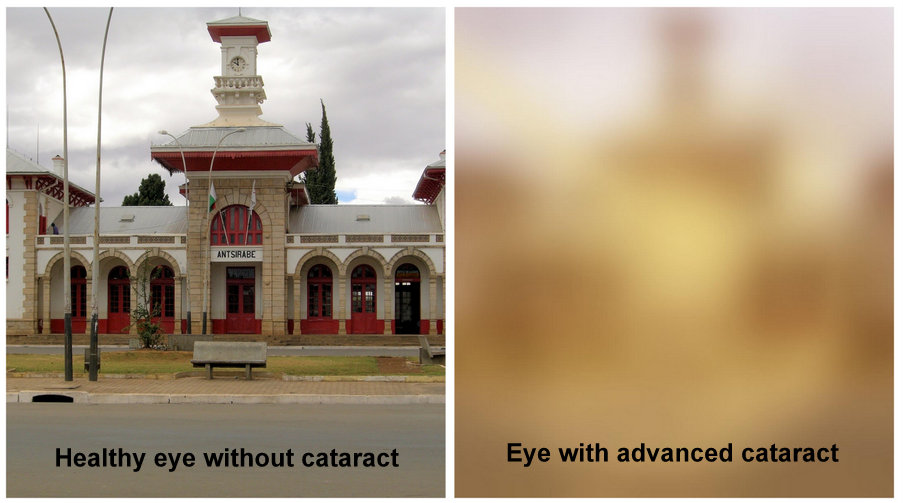
How do cataracts affect your vision?
Inside our eyes, we have a natural lens. The lens should be clear. With cataracts, the lens becomes cloudy. Things look blurry, hazy or less colourful with a cataract. Most age-related cataracts develop gradually. Other causes are Traumatic, Congenital, Steroid induced
Phacoemulsification involves the removal of this cloudy/opaque lens under topical anaesthesia (without injection) from an incision as small as 1.8mm to 2.8mm. Foldable Intraocular lens implants are then inserted through the same incision. This treatment is the gold standard in Cataract surgery. The surgeon uses microsurgical instruments to create a circular opening in the lens capsule and a special pen-shaped probe is inserted through that opening to emulsify the cloudy center of the lens which are then suctioned out of the eye. An artificial intraocular lens (IOL) is implanted to replace the cloudy natural lens. The side walls of the corneal incision will be filled with a special liquid and self-seal after surgery, so most commonly stitches are not needed.

Why cataract surgery is needed?
For some, simply replacing a cloudy lens with a clear Intraocular Lens and wearing glasses for some activities is perfect. For others, achieving the best possible vision without glasses after cataract surgery is the goal. Your vision needs and expectations can help you and your ophthalmologist decide the best surgical option for you.
In case you have Corneal Astigmatism diagnosed during your cataract consultation and you would like to have that refractive error corrected during cataract surgery, there is an option of Toric Intraocular Lens Implantation
Laser cataract surgery option is provided if you want to have a premium lens implanted, such as an Astigmatism-correcting Toric IOL or a multifocal IOL.
A variety of lenses from simple non foldable to Toric Multifocal /Trifocal foldable Restor (Alcon) Panoptix / Symphony(AMO) are available at Kataria Eye & ENT Hospital Pvt. Ltd.




